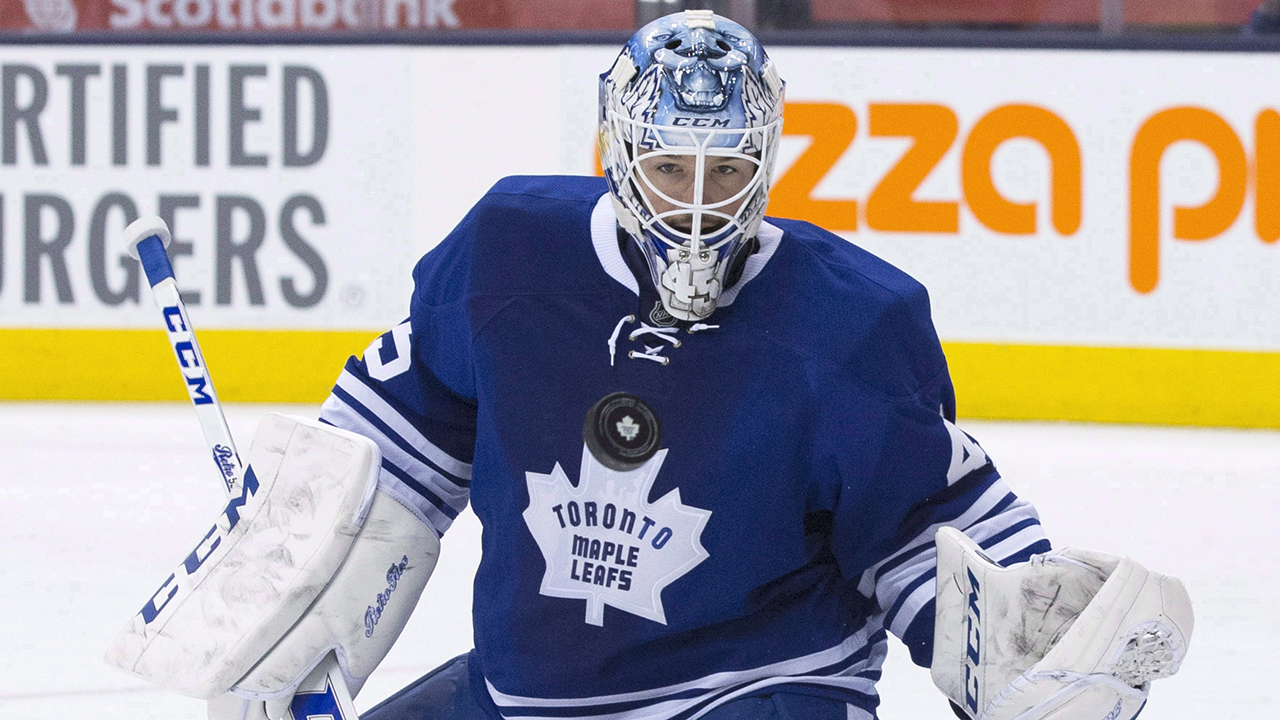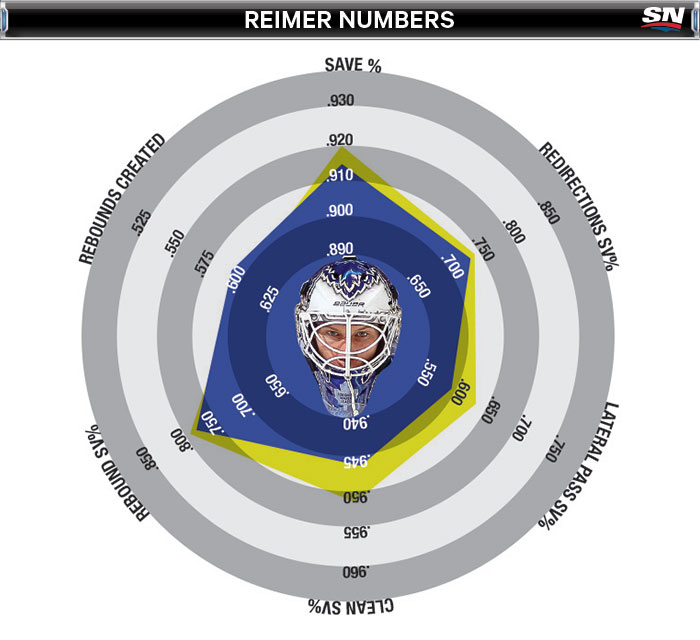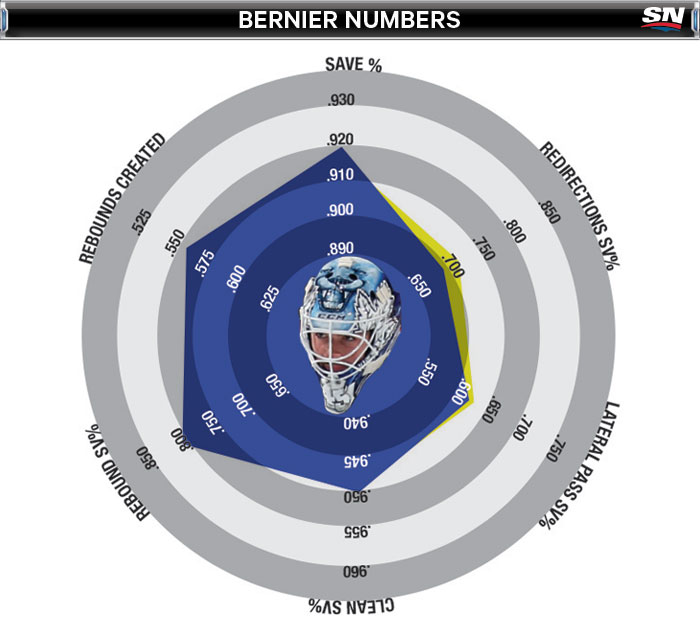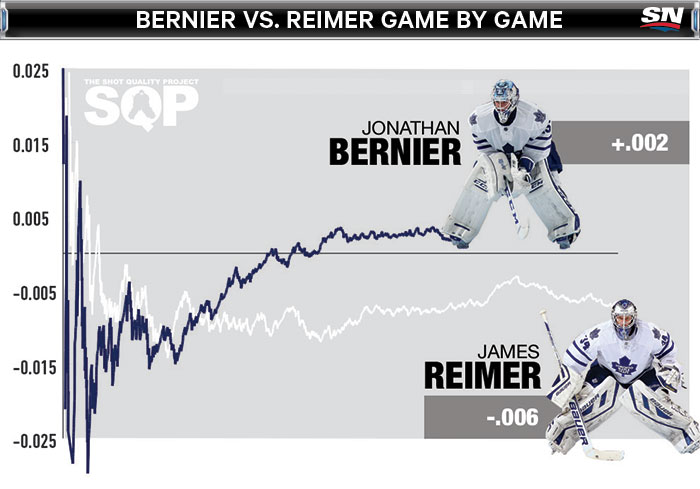Analyzing goaltenders and discovering any pattern of repeatability has proven difficult for even the best of the analytics community. There have been problems with the data accumulation leading to flawed data sets, sample-size issues and struggles isolating defensive impact on a goaltenders numbers.
I ran into these sample-size issues with James Reimer when I wrote last season about Olympic goaltender contenders last December. My self appointed window focused on performance heading into the Sochi, a window of about 60 games. The time frame highlighted the best hockey of Reimer’s pro career and an assessment, about 30 percent of his career total, leading to a favourable assessment.
With a goaltender controversy always looming beneath the surface in a market like Toronto, I wanted to look into the entire careers of Jonathan Bernier and Reimer to make a better assessment. When added to traditional scouting methods, which favour Bernier’s efficiency, it became pretty clear that Bernier is the better goaltender.
As my data set has grown, I’ve been afforded better information to create expected save percentages. My expected save percentages are now tailored to individual goaltenders by assessing expected outcomes from each shooting position on the ice. That allows me to calculate what an average goaltender outcome would be based on the same workload faced by the goaltender I am studying.
Last season I assessed Bernier and Reimer based on the same average. This season I can create an average based on their actual workloads. Bernier’s expected save percentage for his career is .917 whereas Reimer’s is .920. Much higher than the league average of .913.
I mapped Reimer against the results of the average based on my 50,000-shot sample. Yellow indicates what an average goaltender should produce in Reimer’s individual circumstances; blue represents what Reimer actually produced—below average in every major category. His performance on clean shots is a concern because they make up the largest sample a goaltender faces. This could be a function of getting into position slightly late. That can spiral because you can’t read and assess before the shot, your feet are set late, your hands trail the play and you begin to react instead of acting based on a plan and reading the ice.
Reimer’s lateral struggles don’t surprise me. I find he has issues with balance, which result in him over-committing and finding himself on all fours quite frequently. His hand positioning also doesn’t allow him to control shots with his stick in the same manner as Bernier, which is why rebounds come off his pads allowing for less control.
I then mapped Reimer versus the expected average from each location on the ice. The areas marked in green are where he performed above the average expectation, red is below average, white is the league average.
This is where we begin to see Bernier really separating himself from Reimer. Goaltenders generally are vulnerable in the home plate area, but Bernier excels in a lot of areas where Reimer struggles. Bernier is also a better skater than Reimer, which allows him to beat plays. Bernier’s reads and skating allow him to get to where he needs to be before danger arises on plays high in the zone. Add in better hands in better positions and he corrals pucks with his body or places them in less dangerous areas. On plays down low, superior balance and lateral mobility allow Bernier to also beat plays along the ice, hence his above-average marks from 10-12 feet in front of his net.
One of the reasons that “rebound control” became such a big talking point in Toronto is because it is one of the most obvious areas Bernier is markedly superior to Reimer. Bernier gives up fewer rebounds and is much better recovering to stop them. But that is just one of many small factors that highlight his overall superiority.
We can see from their rolling averages that Bernier was on a steady upward trajectory up until last season when he began to plateau. Upon his arrival in Toronto, he settled into a slightly above-average goaltender trending as high as +.04 last season. Outside of his pre-Olympic spike, which settled back into his slightly below average range in the second half of 2013-1, Reimer has been pretty steady over the past two seasons in the -.05 range.
This is where we run into controversy. Based on scouting reports and these numbers, the Leafs are actually nicely situated with an above-average goaltender and a competent backup who can step up in situations when needed to bridge injury gaps and allow the starter some rest. The problem is expectations. When your backup has established that he can start, a perfect situation can quickly destabilize into an unhealthy one.
Reimer is still young and he may need to make a run with another organization to prove where his ceiling lies, but the Leafs made the right choice last season. Bernier was a significant upgrade.





